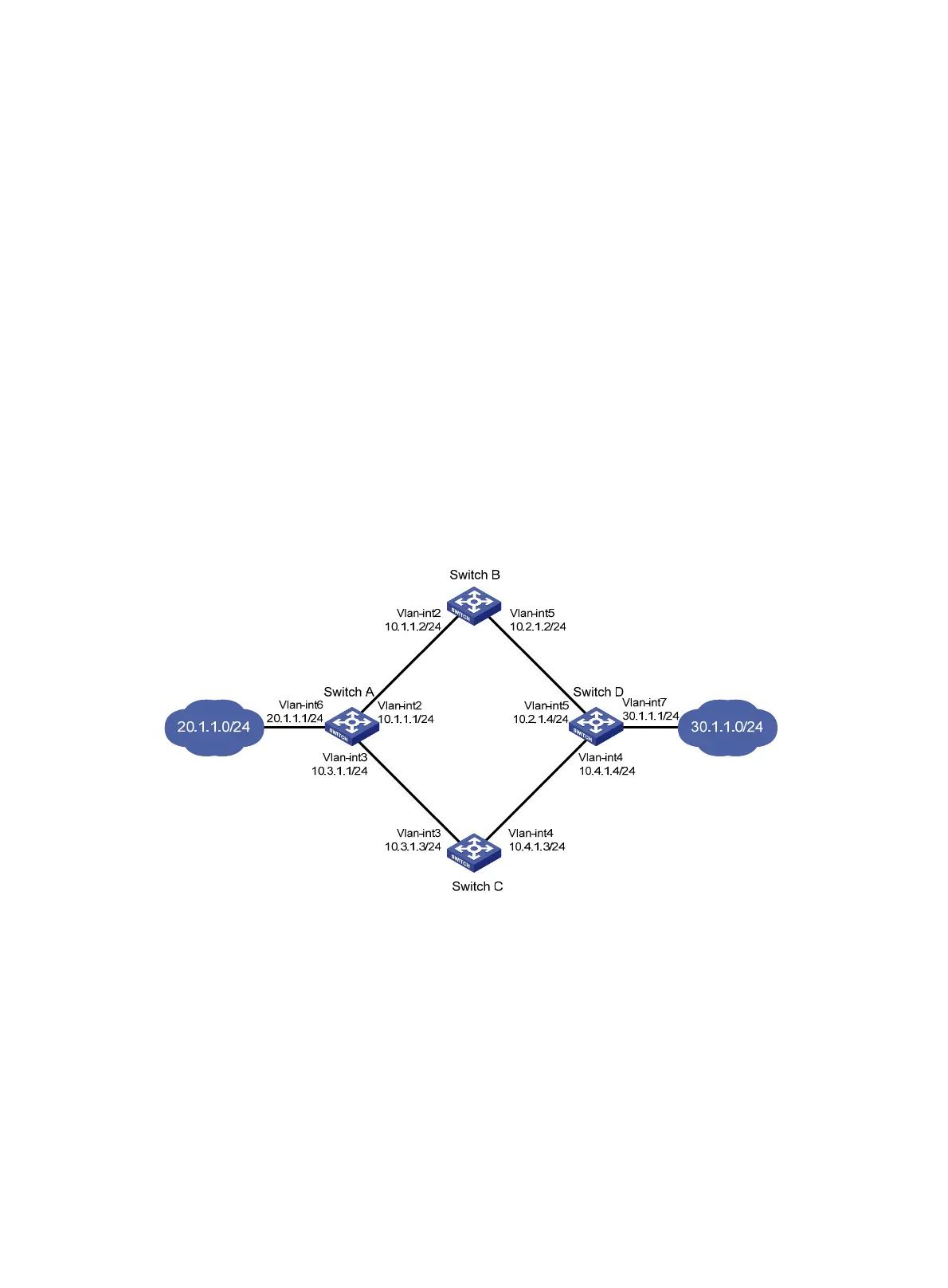144
Static routing-Track-NQA collaboration configuration example
Network requirements
As show in Figure 36:
• Switch A is the default gateway of the hosts in subnet 20.1.1.0/24.
• Switch D is the default gateway of the hosts in subnet 30.1.1.0/24.
• Hosts in the two subnets communicate with each other through static routes.
To ensure network availability, configure route backup and static routing-Track-NQA collaboration on
Switch A and Switch D as follows:
• On Switch A, assign a higher priority to the static route to 30.1.1.0/24 with Switch B as the next hop.
This route is the master route. The static route to 30.1.1.0/24 with Switch C as the next hop acts as
the backup route. When the master route is unavailable, the backup route takes effect. Switch A
forwards packets to 30.1.1.0/24 through Switch C.
• On Switch D, assign a higher priority to the static route to 20.1.1.0/24 with Switch B as the next hop.
This route is the master route. The static route to 20.1.1.0/24 with Switch C as the next hop acts as
the backup route. When the master route is unavailable, the backup route takes effect. Switch D
forwards packets to 20.1.1.0/24 through Switch C.
Figure 36 Network diagram
Configuration procedure
1. Create VLANs and assign ports to them. Configure the IP address of each VLAN interface as
shown in Figure 36. (Details not shown.)
2. Config
ure Switch A:
# Configure a static route to 30.1.1.0/24 with the next hop 10.1.1.2 and the default priority 60.
This static route is associated with track entry 1.
<SwitchA> system-view
[SwitchA] ip route-static 30.1.1.0 24 10.1.1.2 track 1
# Configure a static route to 30.1.1.0/24 with the next hop 10.3.1.3 and the priority 80.
[SwitchA] ip route-static 30.1.1.0 24 10.3.1.3 preference 80

